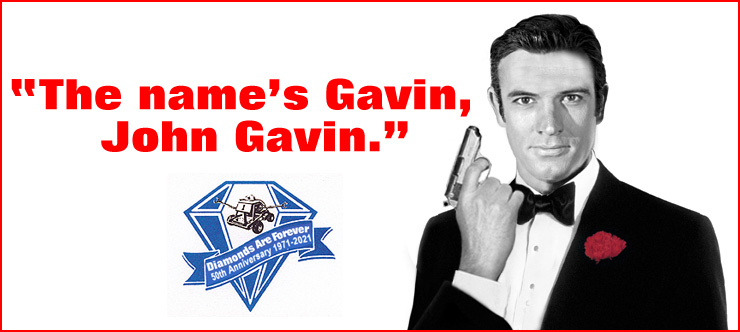 |
|
KEVIN HARPER
investigates the one actor who remarkably was actually
signed and paid to play James Bond but never made it in front of the
camera. |
|
Long before the
short-lived casting of
Pierce Brosnan as James Bond in 1986, only
to be let down by the last-minute renewal of his Remington Steele
television contract, there was another actor who was signed to play 007,
but unlike Brosnan he never got the chance to appear in front of the
cameras. After George Lazenby’s departure from the series in late 1969
before On Her Majesty’s Secret
Service had even been released,
producers Harry Saltzman & Albert R. Broccoli began another long search
for a new James Bond. After many British actors were interviewed and
screen-tested throughout 1970, with no one name standing out, the
producers began to reluctantly cast their net a little wider and
considered some American names. |
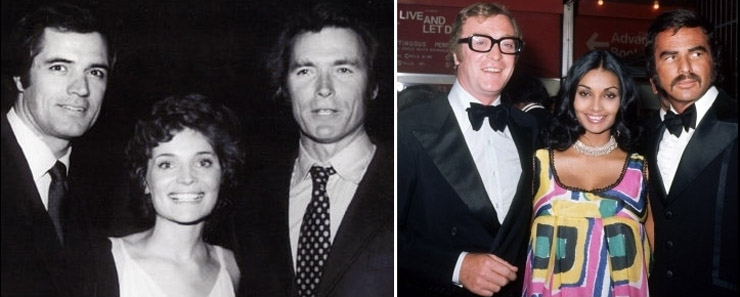 |
|
ABOVE: (left) John
Gavin [who was actually signed to the role of 007 in 1970], model and
TV-host Susan Stafford with Clint Eastwood who was also
approached by United Artists to play Bond in 1972 after Sean
Connery's departure from the role. (right) Michael Caine and
wife Shakira with Burt Reynolds at the London premiere of Live And
Let Die at the ODEON Leicester Square July 5, 1973. Reynolds
had also tested for the role of James Bond at the same time as
John Gavin, and was director Guy Hamilton's first choice to play
007. |
|
|
|
Two American actors
interviewed and screen-tested for the role were Burt Reynolds (1936-2018)
and John Gavin (1931-2018). Both actors passed away within six months of
each other in 2018, but few of their obituaries mentioned the James Bond
connections. Although Reynolds was seriously considered for the role of
James Bond and favoured by Diamonds Are Forever director
Guy
Hamilton, it was John Gavin who was offered the part and signed a contract
in December 1970. In the days before the Internet and up-to-the-minute
reporting of entertainment news, the only way to find out what was going
on was to read the daily gossip columns that appeared in national and
local newspapers. Gavin’s announcement as James Bond went largely
unnoticed by the UK media, but American newspapers did carry some
interesting stories surrounding the casting of the new James Bond. On
December 30, 1970 the San Francisco Examiner revealed that producer
Cubby Broccoli had tested both Reynolds and Gavin and the producer thought
“either could handle the part, but I’ll make one more effort at signing an
English actor before casting the role.” On January 3, 1971 the Palm
Beach Post followed up with “Rumour has it that the next James Bond
may be an American. Would you believe John Gavin? Well then, would you
believe Jackie Gleason?” The second name was clearly a joke, but it shows
that even then an American James Bond was still something of a hard
concept to sell, even to Americans. |
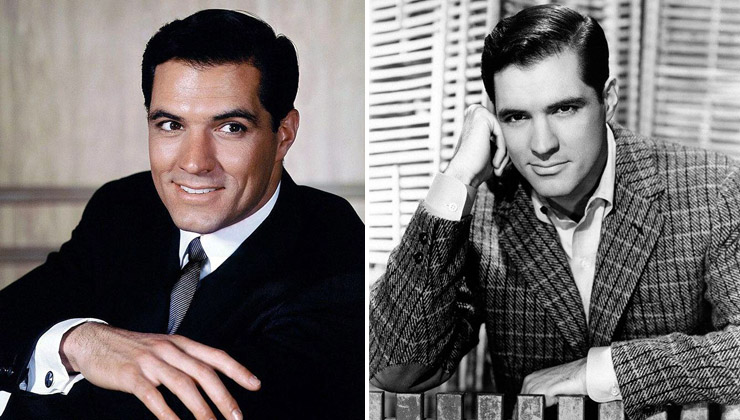 |
|
John Gavin was of
Mexican, Chilean and Spanish descent, and was born Juan Vincent Apablasa
Jr., in Los Angeles, California on April 8, 1931. His ancestors were early
Californian landowners when it was still under Spanish rule. As a result
of this heritage Gavin was fluent in Spanish, and after attending St.
John’s Military Academy in Los Angeles, and Villanova Preparatory School
in Ojai California, he then went on to earn a bachelor’s degree in
Economics and Latin American Affairs from the prestigious Stanford
University. He furthered his academic achievements with Senior Honors work
in Latin American Economic History. Gavin was commissioned in the U.S.
Navy during the Korean War and served aboard the USS Princeton, where he
was an air intelligence officer from 1951-1953. As he was fluent in both
Spanish and Portuguese, this led Gavin to be assigned as Flag Lieutenant
to Admiral Milton E. Miles until the end of his military service in 1955. |
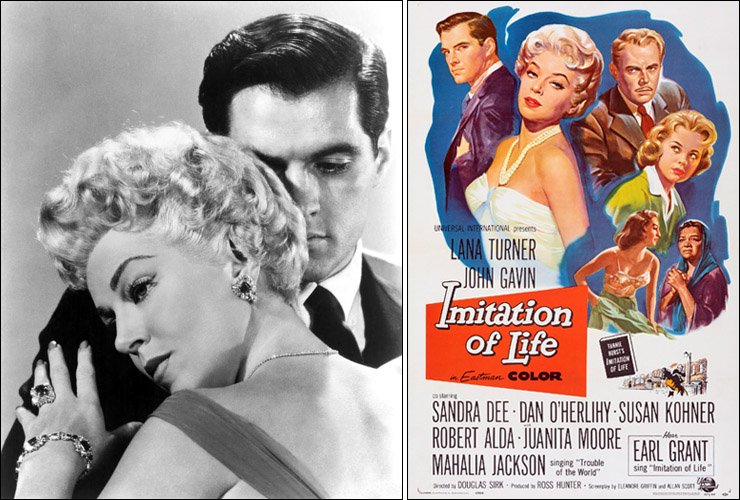 |
|
Although he initially had
no interest in an acting career, Gavin ended up having a screen test and
was offered a contract with Universal-International, which he
turned down due to his lack of acting experience. Encouraged by his father
and the amount of money on offer, Gavin ultimately accepted the offer and
began taking on small roles in several unmemorable films in the late
1950s. His first breakthrough role was as the lead in A Time To Love
and A Time To Die (1958) directed by Douglas Sirk. The influential
director also cast John Gavin in Imitation of Life (1959) opposite Lana
Turner, which turned out to be a huge box-office sensation, leading to
Gavin being voted as most promising male newcomer by Motion Picture
Exhibitor magazine. A year earlier, Lana Turner had co-starred with
up-and-coming young actor
Sean Connery in the British melodrama Another
Time, Another Place. |
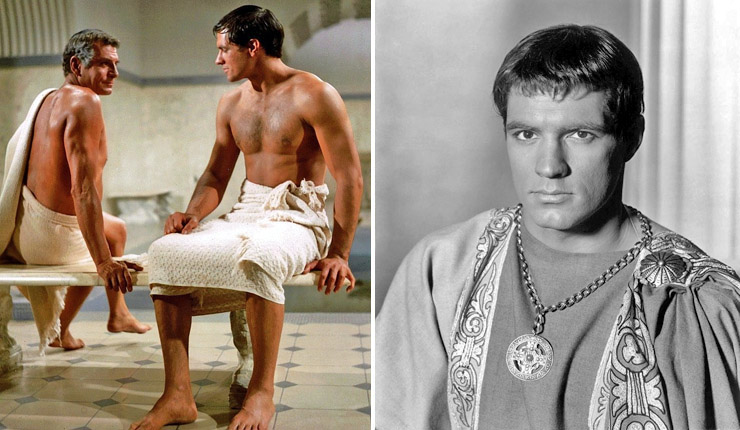 |
|
In 1960 John Gavin was
cast in the key supporting role of Julius Caesar in Stanley Kubrick’s epic
Spartacus, holding his own against major stars Kirk Douglas and
Laurence Olivier [pictured above left], and the scene-stealing Charles Laughton. In the same
year he was cast as Sam Loomis in Alfred Hitchcock’s ground-breaking
Psycho, which probably remains Gavin’s single-most important
contribution to cinema. Although the star had reservations about the role,
it was his bare-chested lunchtime meeting with doomed co-star Janet Leigh
that helped to break down barriers and attitudes towards sex in the
morally repressed early 1960s. |
 |
|
After these two
critical and commercial successes, Gavin continued to play the
good-looking leading man opposite the likes of Doris Day and Sophia
Loren, in several forgettable Universal thrillers and comedies
in the early 1960s. Gavin left Universal in 1962 to go
freelance and headed off to Europe, with little success, returning to
the USA in 1964 to play the lead in the short-lived Western TV series
Destry, based on the classic 1939 film Destry Rides Again,
which had starred James Stewart. The series lasted for one season
before being cancelled. Gavin then returned to Universal and
appeared in another TV series Convoy, a World War II drama in
which he starred as Dan Talbot, commander of a Navy Destroyer escort
ship during the battle of the Atlantic. This series was also cancelled
after one season. Gavin then appeared in the Mexican film Pedro
Páramo (1967), that turned out to be something of which he was
proud.
In a 1966 Los Angeles Times interview Gavin stated, “In Mexico,
Pedro Páramo is as important as Don Quixote is in Spain.
This may sound grandiose, but it can be compared with Dante's
Divine Inferno or Goethe's Faust. It is the journey of a
young man in search of his father but, as an allegory, it is man in
search of himself... It's the biggest Mexican film ever made.” |
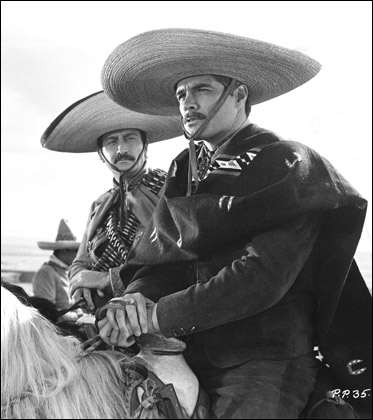 |
|
|
CONTINUED |




